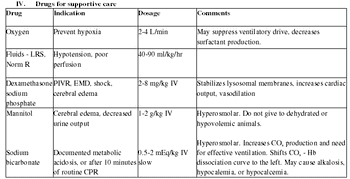
Predisposing factors that may preclude a cardiocerebral arrest should be eliminated when possible for every critical patient.

Predisposing factors that may preclude a cardiocerebral arrest should be eliminated when possible for every critical patient.

Successful CPCR is dependent on several factors, the most important factor being the true cause of the arrest.

When performing a complete cardiac evaluation, a minimum of two views are necessary: lateral and either VD or DV.
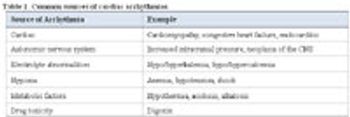
Identification and correction of the underlying causes of arrhythmias are key to their long-term, successful management.

Congestive heart failure (CHF) is not a primary disease; rather it is the clinical manifestation of the failing heart and describes a syndrome characterized by complex interactions of the heart with neurohumoral compensatory responses.

Cardiovascular monitoring of patients under anesthesia is necessary so that potentially harmful changes in the function of the cardiovascular system can be recognized and appropriate action can be taken.

Fort Collins, Colo. -- Veterinary researchers at Colorado State University discovered that cells in diseased heart valves of dogs and humans produce serotonin, which they believe may be the driving force behind mitral-valve disease in both.

Q: Please review use of examining low-velocity blood flow in the dog's abdomen.

Montreal, Canada -- An updated mitral valve disease consensus statement was presented at this month's American College of Veterinary Internal Medicine (ACVIM) meeting in Montreal.

Although, of course, ferrets are not just small cats or dogs, the diagnosis and treatment of heart disease in ferrets does mirror that used in cats and dogs, and ferrets often develop similar heart problems.

East Lansing -- The open-heart-surgery program at Michigan State University's College of Veterinary Medicine, one of just three in the country, is being reorganized before the fall semester.

A Purdue study has shown a higher incidence of heart disease in dogs with bad gums.

Physiologic flow murmurs are murmurs associated with normal blood flow through the heart and great vessels.

The normal horse's heart rate varies with exercise up to a maximum of 200 - 240 beats/ minute.

There are approximately 60 million cats in the US, of which it is estimated that 11% have heart disease.

When first alerted to a patient presenting in crisis, the goal of the initial examination is to rapidly identify any imminently life-threatening problems via a streamlined, efficient, clinical examination.

Mitral regurgitation is the most common heart disease in dogs (seen in approximately 85% of dogs with heart disease).
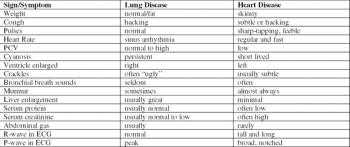
Cough, like many other signs/symptoms, occurs commonly in dogs due to either heart disease (most often due to mitral regurgitation) or lung disease (often due to pulmonary fibrosis, tracheal collapse, tracheo-bronchitis).

Cardiomyopathy refers to an affectation of the heart not caused by valvular or coronary vascular disease, and is often of unknown etiology.

As in all species, cardiac examination involves cardiac auscultation for rate, rhythm, heart sounds, and murmurs, palpation of peripheral pulses, and examination of peripheral veins and edema.
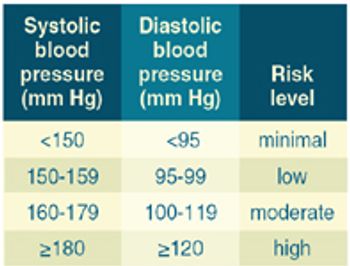
By altering pre-glomerular resistance, healthy kidneys can maintain relatively stable glomerular capillary pressures despite variations in systemic blood pressure. This process is termed "renal autoregulation."
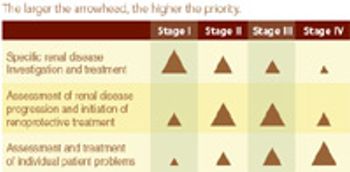
Chronic kidney disease (CKD) occurs over a period of months to years and is a leading cause of morbidity and mortality in dogs.

The Diagnostic Cardiology CD-ROM presents all of the fundamental information that is essential to practicing small animal cardiology. (5 CE credits)

National Report - Pet owners are shopping for price, veterinarians say, and it's impacting general practice and referrals.

When managing chronic cough, it is important to grade the severity of the cough.